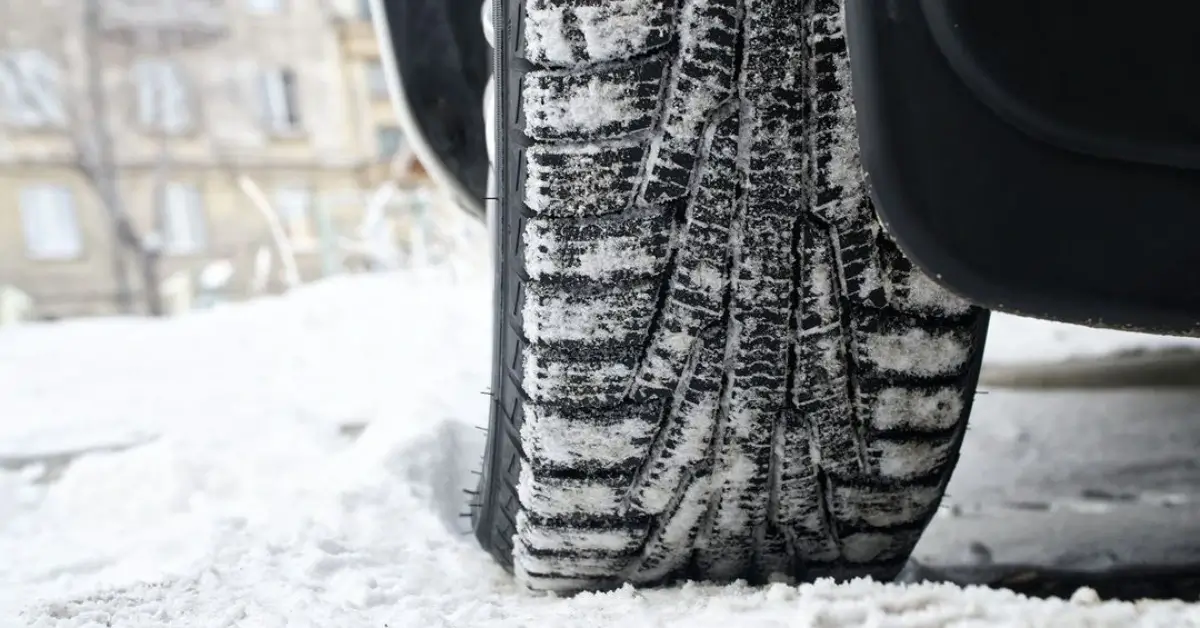Winter car tires are crucial for safe and comfortable driving when temperatures drop and roads become icy or snowy. We know that choosing the right tires might seem difficult, but we’re here to help you make an informed decision. Our goal is to guide you through the process so you can confidently make the best choice for your vehicle.
It’s essential to understand what sets winter tires apart from their all-season counterparts. They’re specifically engineered to perform well in cold temperatures, providing better traction, grip, and braking capabilities on ice and snow-covered surfaces.
“Even the strongest blizzard starts with a single snowflake”
Sara Raasch (Snow like Ashes)
In this article, we’ll discuss the top winter car tire options, their unique features, and how to choose the perfect set for your car. So, let’s dive into the world of winter car tires and get you prepared for a safe and enjoyable driving experience during those frosty months!
Benefits of Winter Car Tires
As we all know, winter can be a challenging time for driving, with snow, ice, and cold temperatures affecting road conditions. Winter car tires are designed to help drivers navigate these challenging conditions safely and effectively. Next, we will discuss the key benefits of using winter tires, like improved traction, shorter braking distance, and enhanced handling.
Improved Traction
One of the greatest benefits of winter tires is their ability to provide better traction on icy and snowy roads. The unique tread patterns of these tires help them maintain grip and stay in contact with the road surface. Some winter car tires even have special patterns that pick up snow to provide better traction. This will significantly reduce the risk of slipping and sliding, allowing us to drive with more confidence and safety.
Shorter Braking Distance
In addition to providing better traction, winter tires are also designed to shorten the braking distance on slippery roads. They are made from softer rubber compounds that do not harden in cold temperatures, maintaining their flexibility and providing better grip. This allows superior braking performance even on snowy or icy surfaces, reducing the risk of a collision or losing control of our vehicle.

Here is a quick comparison of braking distances when using winter tires:
| Road Condition | Braking Distance (Winter Tires) | Braking Distance (All-Season Tires) |
|---|---|---|
| Dry | 100% | 100% |
| Wet | 102% | 109% |
| Snow | 110% | 158% |
| Ice | 150% | 210% |
Enhanced Handling
Finally, using winter car tires greatly improves the handling of our vehicle in cold weather conditions – I don’t know about you, but I really could use that. The tires’ specialized tread patterns and softer rubber compounds lead to superior all-around winter performance, increased vehicle control, and responsiveness. This allows us to navigate turns and maintain our desired speed more confidently. With better handling, we can feel more comfortable and secure, even when driving in difficult winter conditions.
If you ask me, investing in winter car tires is a smart decision for anyone wanting to improve their driving experience and safety during the cold season.
Types of Winter Tires
When it comes to winter car tires, choosing the right type for optimal safety and performance in harsh conditions is essential. In this section, we’ll briefly discuss three common types of winter tires: studded, studless, and performance winter tires.
Studded Tires
Studded tires are equipped with small metal studs embedded in the tread. These studs provide exceptional traction on icy and hard-packed snow-covered roads. However, they can be noisy and may cause increased road wear. As a result, some states have restrictions on studded tire use.

Studless Tires
In contrast, studless tires rely on advanced rubber compounds and innovative tread designs to maintain traction on slippery surfaces. These winter car tires stay flexible in low temperatures, improving grip on ice and snow. A popular driver choice is the Michelin X-Ice Snow, known for its excellent all-around performance.
The benefits of studless tires are:
- Quieter operation compared to studded tires
- No legal restrictions on the use
- Less wear on roads and highways
Performance Winter Tires
If you drive a sports car or luxury vehicle, performance winter car tires may be the best option for you. These tires offer better grip and handling on wet and dry roads while maintaining agility at higher speeds. A top choice in this category is the Pirelli P Zero Winter, designed for high-performance driving in colder conditions.
In summary, when selecting winter car tires, consider factors such as your driving style, local climate, and legal restrictions. By equipping your vehicle with the right type of winter tire, you can ensure safer, more comfortable driving even in challenging conditions – and in my opinion, that’s what we want.
Maintenance and Care
We all know that winter car tires are essential for driving safely in cold and icy conditions – in other Countries even a duty by law. To ensure optimum performance and safety, it’s important to take good care of your winter tires. Here, we’ll be covering three crucial aspects: tire pressure management, regular inspections, and proper storage.
Tire Pressure Management
Maintaining proper tire pressure is important because it helps provide the best traction and handling on slippery and snowy roads. Check your vehicle’s recommended tire pressures, typically found in the owner’s manual or the door jamb information sticker. Make sure to check the pressure when the tires are cold (i.e., before driving or at least three hours after driving).
- Cold temperatures: Tire pressure decreases as the temperature drops. Ensure to add more air when needed.
- Tire Pressure Monitoring System (TPMS): If your car is equipped with TPMS, it will alert you when the tire pressure is low. However, it’s a good idea to manually check your tire pressure occasionally for accuracy.
Regular Inspections
Inspecting your winter tires regularly is necessary to ensure they remain safe and effective throughout the season, even if they’re only a few years old. Keep an eye out for the following:
- Treadwear: Make sure the tread depth is sufficient and the wear is even. Bridgestone recommends using winter tires if you live in areas with extreme winter temperatures.
- Cracks and bulges: Look for any visible damage such as cuts, cracks, or bulges, which could be potential signs of tire failure.

Proper Storage
When winter is over, store your winter car tires properly to maximize their lifespan and maintain their quality for the upcoming winter seasons. Follow these storage guidelines:
- Clean and dry your tires: Wipe off any dirt, grime, and moisture with a cloth or soft brush before storing.
- Keep them away from direct sunlight: Exposure to sunlight can cause the rubber to deteriorate. Store your tires in a cool, dry, and dark environment.
- Stack them vertically or on a rack: When storing, lay the tires flat and stack them on top of one another, or place them on a tire storage rack.
By following these maintenance and care tips for your winter car tires, you’ll be better prepared for the challenges of driving in cold and icy conditions.
Purchasing Tips
We know that choosing the right winter car tires can make all the difference for a safe and comfortable driving experience. Now we’ll provide you with some essential tips that can help you find the perfect tires for your vehicle. We’ll discuss tire size and compatibility, tread patterns, and the importance of considering quality and brand.
Tire Size and Compatibility
It’s crucial to select the right size of winter car tires that are compatible with your vehicle. To do this, refer to your car’s owner manual, or the tire information label found on the driver’s side door jamb. You might also explore smaller wheel and tire sizes that can be more cost-effective.
When considering tire size, keep in mind the speed rating, load-carrying capacity, and other specifications, as well. Matching these factors to your vehicle and driving conditions ensures optimal performance.
Tread Patterns
Winter tires come in various tread patterns that handle different road conditions. Some popular options include:
- Symmetrical: These have a uniform pattern and are suitable for general driving conditions.
- Asymmetrical: These tires feature different patterns on the inner and outer edges, providing better grip and handling on slippery surfaces.
- Directional: They have a V-shaped pattern and are designed to channel water more effectively, making them ideal for wet conditions.
When selecting a tread pattern, consider your local winter temperatures and typical road conditions to make the right choice.

Quality and Brand Considerations
The quality of your winter tires plays a significant role in their performance, lifespan, and even safety. Therefore, it’s essential to invest in reputable brands, such as Michelin, Goodyear, or Bridgestone.
These brands utilize advanced technologies and materials to ensure their winter tires provide excellent traction, even in harsh winter conditions. Moreover, they undergo rigorous testing for safety and performance. Investing in a reputable brand can give you peace of mind and confidence, knowing that you’re driving on quality tires.
FAQ
Do I need winter tires in Germany?
Drivers of cars and motorbikes are required to have their cars fitted with winter tires when driving in slushy, snowy or icy conditions. Failure to do so can incur a fine of 40 Eur and one point on your license. This will increase to 80 Eur and one point if you cause an obstruction.
Do I need to put winter tires on my car?
To avoid ending up in a dangerous situation, remember this simple rule: “When the temperature drops below 7°C, it’s time to switch to your winter tires!”
Are winter tires OK in summer?
Using winter tires in summer exposes you to a number of risks, including increased stopping distances, less control of the vehicle in emergencies, and more likelihood of skidding.
I hope this article helped you with every question that you had regarding Winter Tires.
If there is any kind of question left, please don’t hesitate to contact me, or leave a comment.
Have a safe trip during the Freezing times and take care.
See you next time when it says again…
…Let´s Ride




